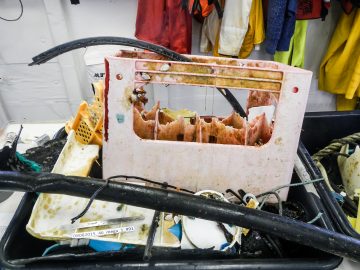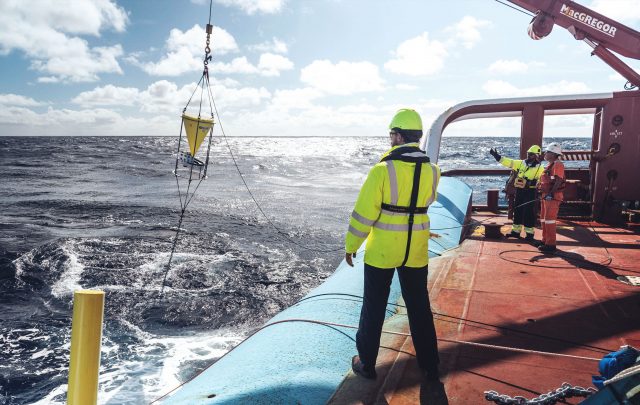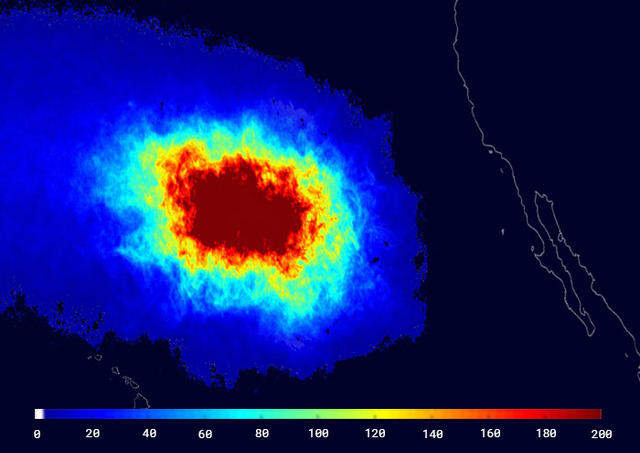
Solving the Mystery of Missing Ocean Plastic
Back to updatesIn 2018, we reported that 80,000 metric tons of plastic were currently floating in the Great Pacific Garbage Patch, a figure four to sixteen times larger than previously estimated. We explained this increase by using robust methods to quantify the myriad of size classes composing plastic pollution, ranging from huge ghost nets to infinitesimal microplastics.
Extrapolated at a global scale using numerical models, we projected several hundreds of thousand metric tons currently floating at the ocean surface. Although these figures are alarming, they conflict with current global estimates of plastic inputs into the ocean (Jambeck 2015, Lebreton 2017),which predict several million metric tons enter the oceans every year. With plastic use swiftly rising in recent decades, we should be finding dozens of million metric tons of plastic on the ocean surface by now. But, we don’t. Which leads us to ask: where is all the plastic?
The plastic smog theory
One commonly accepted understanding is that floating plastic pollution doesn’t persist at the surface; rather, its ultimate fate is at the bottom of the ocean. The idea is that just like a smog cloud over a city, the small particles descend into deeper waters as they break down (Eriksen 20xx). If we were to stop plastic inputs into the ocean today, the majority of floating plastic debris would degrade and settle below the ocean surface layer, in less than a few years (Koelmans 2017). The smog theory raises more contradictions, however. In the field, we find perfectly intact Japanese objects, likely originating from the 2011 tsunami. But, mostly, the plastic we bring back from our expeditions and cleanup test operations appears very old. Some plastic back to the 1970s, making it difficult to accept that the majority of HDPE fragments we collect were perfectly intact plastic objects only a few years ago.
We know that the most crucial mechanism governing the weathering of polymers is photo-oxidation. This occurs when plastic is in contact with oxygen and bombarded by photons (two conditions that floating plastic may not encounter). Plastic is better conserved when submerged in seawater than exposed to dry air (Andrady 20xx).
To resolve these contradictions and quantify the plastic smog, we chose to sample in deeper waters. We performed this sampling in the Great Pacific Garbage Patch by deploying sediment traps for XXX months below the surface to measure the fallout of plastic particles. Later this year, we will retrieve these traps, which will provide further insights into the fallout mechanisms in this region.
In the meantime, we went back to our desks and continued questioning the ocean plastic smog theory. Using evidence collected in the field and numerical models for the dispersion of floating plastic in the ocean, we proposed an alternative explanation for the missing plastic. This new theory on the fate of floating plastic objects has been presented to the further scientific community in the manuscript “A global mass budget for positively buoyant macroplastic debris in the ocean” and was published in the journal Nature Scientific Reports on DATEXXX.
Plastic archeology

It is impossible with available knowledge to date ocean plastics. The optimal way to estimate the age
of plastic objects is to identify clues on the debris such as labels, production dates, and organisms that have grown on floating debris. Since we began exploring the North Pacific Ocean and collecting debris with our trawls, we have systematically documented this type of evidence on collected ocean plastics. Of the 83,144 plastics pieces greater than 0.5 cm from the Mega Expedition, we identified 50 production dates on plastic debris. Half of the debris with recognizable production dates were produced in the 70s, 80s, and 90s – making our oldest identified sample more than 40 years old.


![Great Pacific Garbage Patch in 2030 with and without cleanup. [scale units : kg/km2]](https://staging.assets.theoceancleanup.com/scaled/640x/app/uploads/2019/05/map_gpgp_with_cleanup_with_hscale_web.png)

